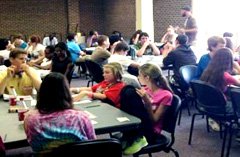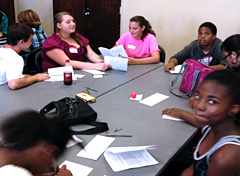Rethinking Tolerance: Ensuring That All Students Belong
I’ve always disliked the connotation of the word "tolerance" in schools because it reflects the language of a segregated society. We can tolerate the smell of ten-day-old sushi, but are we really addressing the problems of society by teaching our students to simply tolerate one another?
"Hello, My Name Is…"

Once everyone had their labels attached to their shirt, I asked, "How many of you would like to swap your label?" Many students raised their hands. Others wondered why peers should be able to change their labels if they cannot do this in real life.
Students wrote freely for several minutes about images associated with their assigned identity, and their positive or negative connotations. The responses varied. Some, although honest, could be categorized as culturally insensitive:
Others stated that their assigned identities didn’t make them feel any different, but recognized people may view their label negatively:
After writing, students talked candidly in small groups about social labels, word associations, and how these labels and stereotypes affect an individual’s sense of self-worth.
Just Like Us

My students realized that they spend time with people who are similar to them:
Adults in attendance were instructed to exclude coworkers from their list. One instructor realized that his friends were strikingly similar as he spends all his leisure time in the same circles, boating, golfing, or in church. "How do we expect our students to embrace diversity if we don’t?" asked Jennifer Smyth, a teacher at Hertford Early College. I recently followed up with Jennifer, who said that the activity made it clear "the degree to which I rationalize in confronting the sameness, the lack of diversity in my personal life: I was looking for a way to tell myself that I practice what I preach."
A few months after the workshop, I asked the students, "How can teachers and administrators ensure that all students within a school feel like they belong?" Their responses fell into three categories:
1. Create a Culture of Acceptance
2. Address Feelings of Isolation
3. Foster Meaningful Relationships
How do you help diverse students feel like they belong in your classroom or school?
